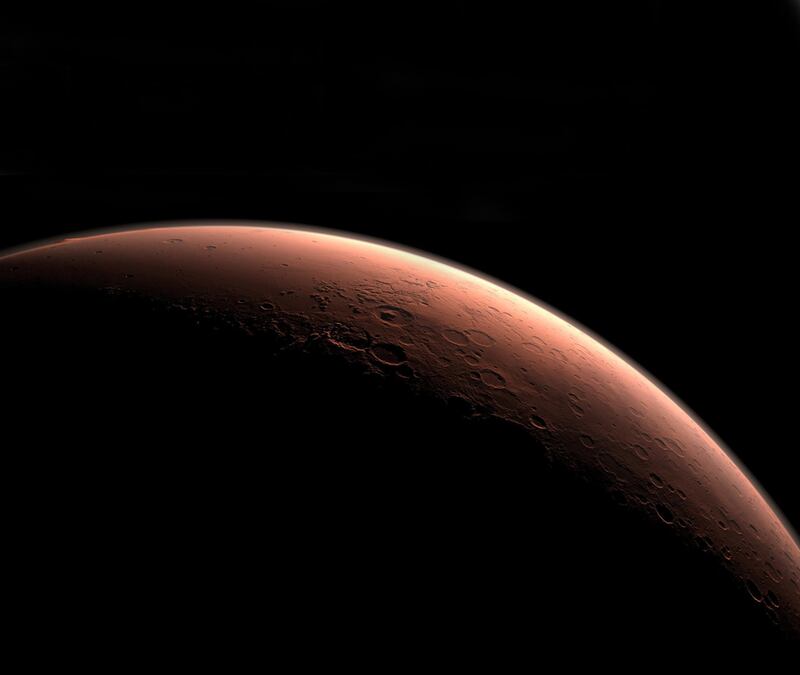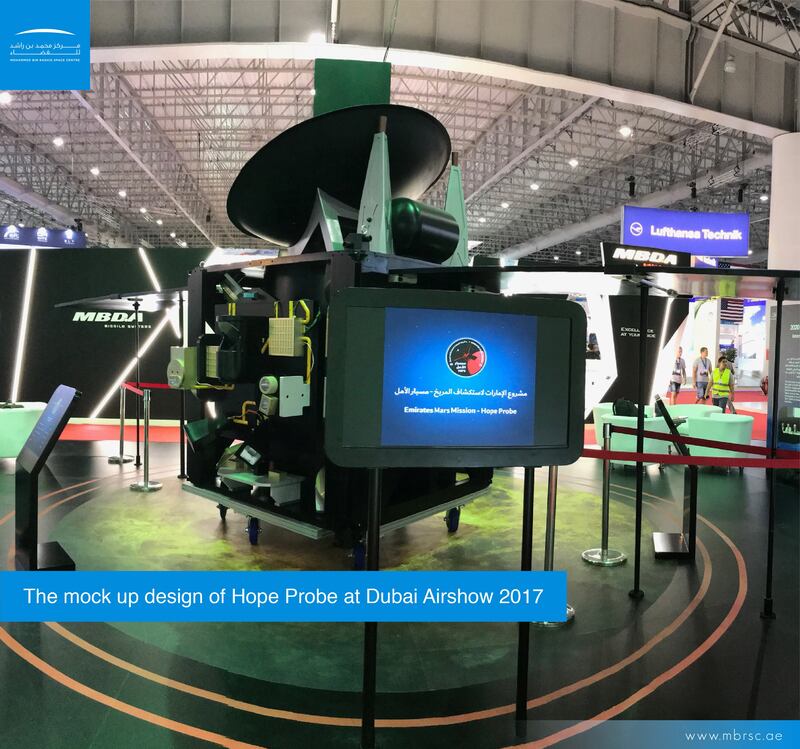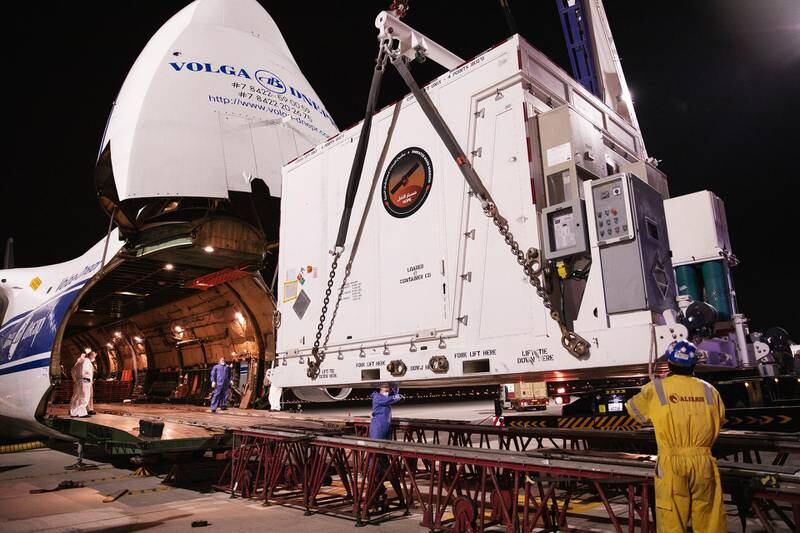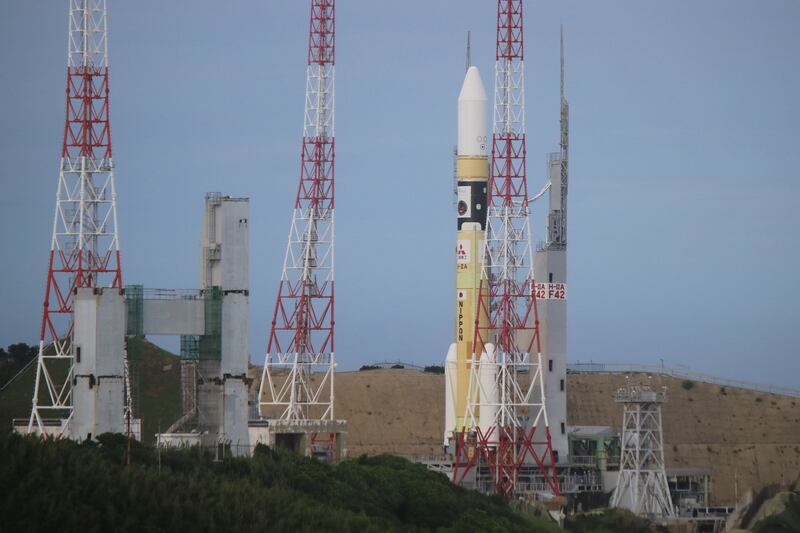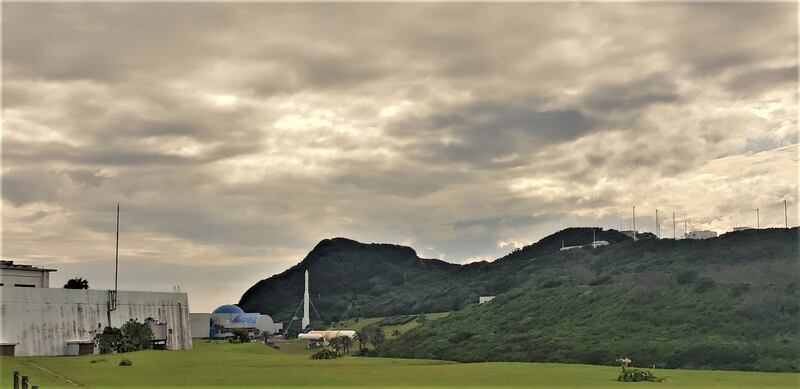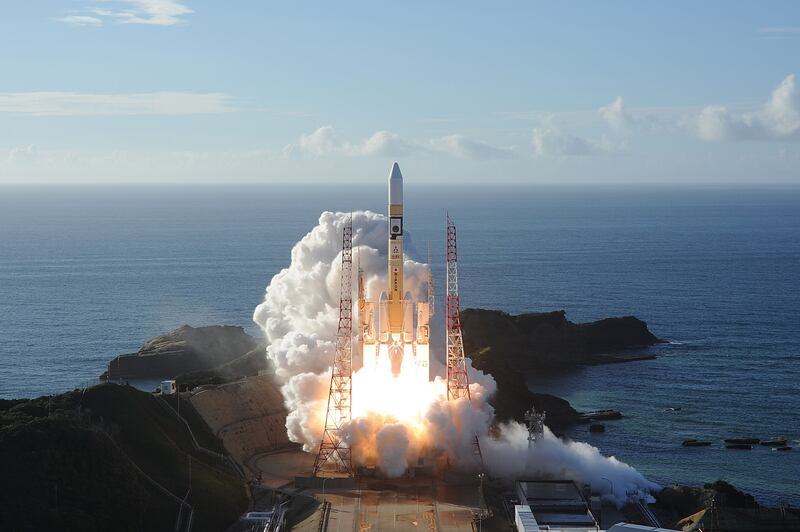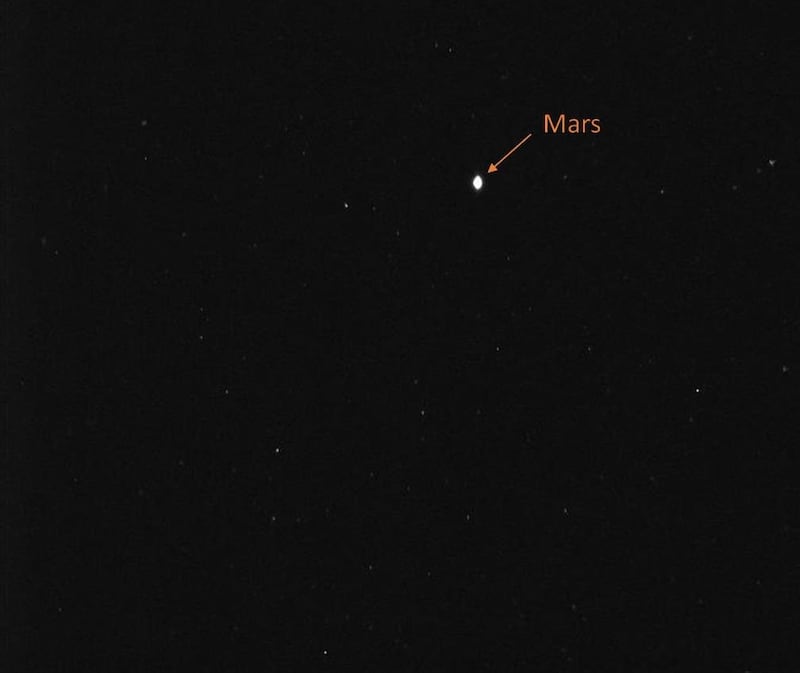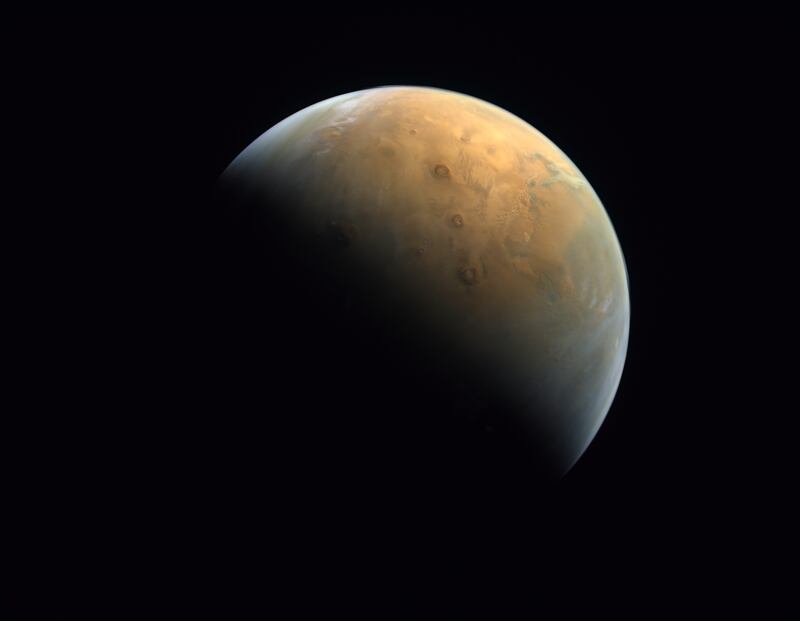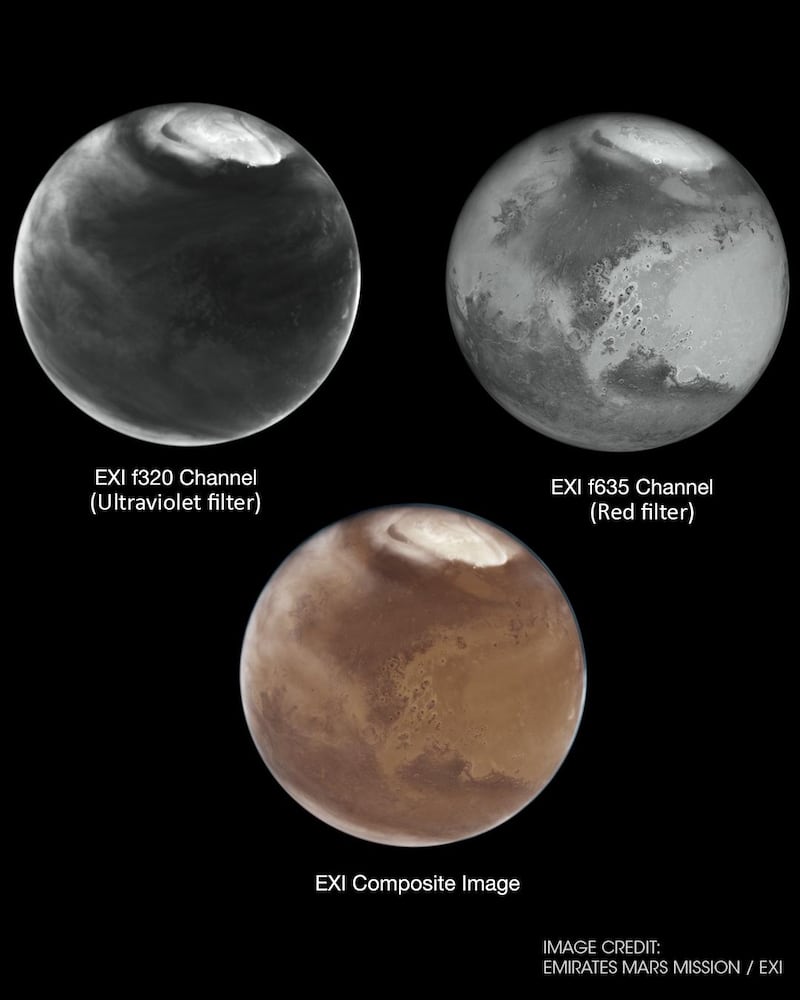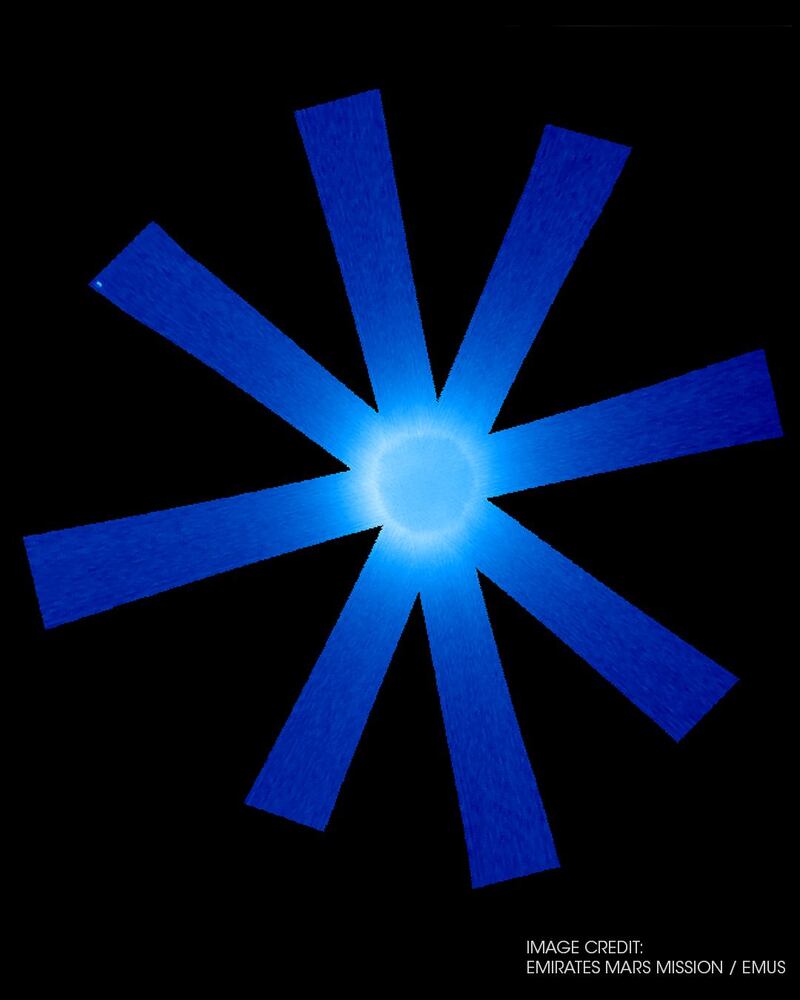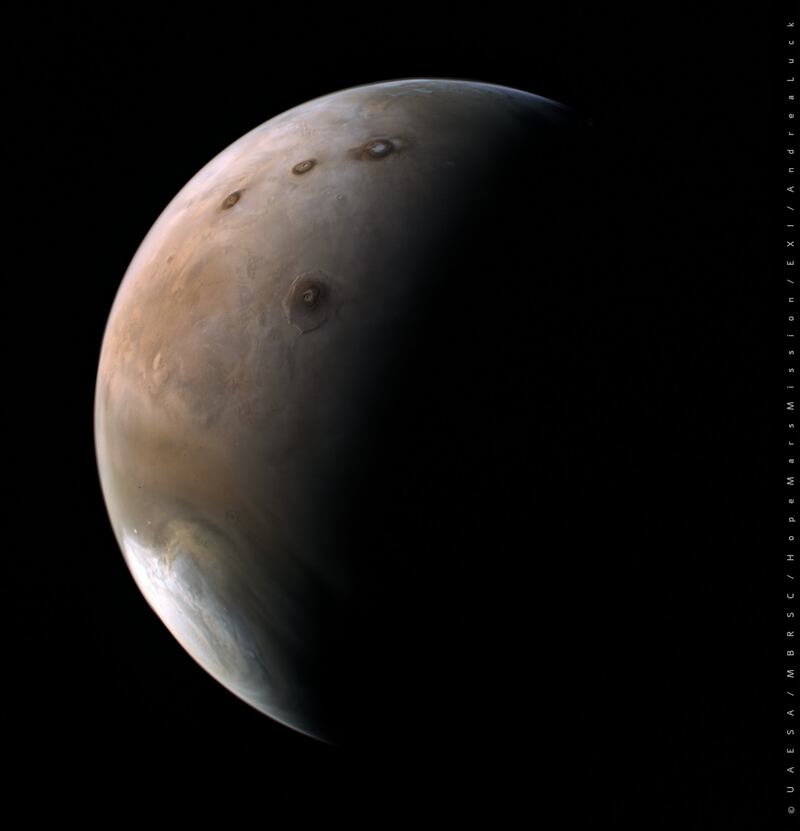The UAE’s Hope spacecraft has made a landmark discovery of a new type of aurora on Mars.
Scientists with the mission are calling it the "sinuous discrete aurora", a huge, worm-like aurora that extends halfway around the planet.
Aurorae are colourful lights that appear on a planet when solar activity disturbs its atmosphere.
On Earth, the aurora borealis and aurora polaris – known as northern lights – happens when protons and electrons from solar wind hit particles in the atmosphere, causing colourful lights in the sky.
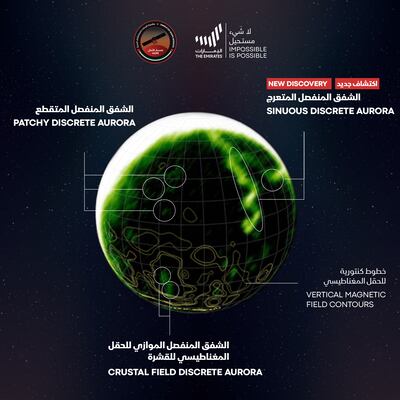
On Mars, however, because of its lack of a global magnetic field and localised crustal magnetic fields in the southern hemisphere, there are three types of aurorae – proton, diffuse and discrete.
But the latest discovery has left scientists puzzled, creating new questions about the interactions between Mars’ atmosphere, the planet’s magnetic fields and the solar wind.
“When we first imaged Mars’ discrete aurora shortly after the Hope probe’s arrival at Mars in 2021, we knew we had unveiled new potential to make observations never before possible on this scale, and we took the decision to increase our focus on these auroras,” said Hessa Al Matroushi, science lead at the Emirates Mars Mission.
“We can obtain nearly whole-disc, synoptic snapshots of the atmosphere to investigate atmospheric phenomena and interactions. It means we are seeing discrete auroral effects on a massive scale and in ways we never anticipated.”

In June, the spacecraft captured the most detailed observations of the discrete aurora in Mars’ night side atmosphere.
Aurorae in Mars’ night side atmosphere are extremely rare to capture. However, Hope has a higher possibility of imaging the phenomenon than any other spacecraft because of its unique elliptical orbit around the planet. It observes the night side on each of its 55-hour orbits of the planet.
What is the new aurora?
The sinuous discrete aurora is made up of long worm-like streaks of energised electron emissions in the upper atmosphere.
These extend many thousands of kilometres, stretching from the day side into the night side of Mars.
The aurora was imaged when the planet was experiencing the effects of a solar storm, which caused a more turbulent stream of solar wind electrons than usual. This allowed Hope to capture the brightest and most extensive aurora it has observed so far.
Dr Rob Lillis, a Hope mission team member at the University of California, Berkeley, described the discovery. "The sinuous discrete aurora was a shocking discovery that in many ways has us scratching our heads and going back to the drawing board," he said.
“We have ideas but no solid explanation for why we are observing intense aurora of this shape and at planetary scales.
“We now have the opportunity to re-examine prior observations of Mars by missions such as Maven and Mars Express to search for signatures that could flesh out Hope’s new observations and perhaps help us try and unpick quite what is happening here.”
The spacecraft arrived at Mars' orbit on February 9, 2021 to study the planet's dynamic weather conditions and atmosphere.
Since then, thousands of science images have been released, as well as data that is available free of charge online.
